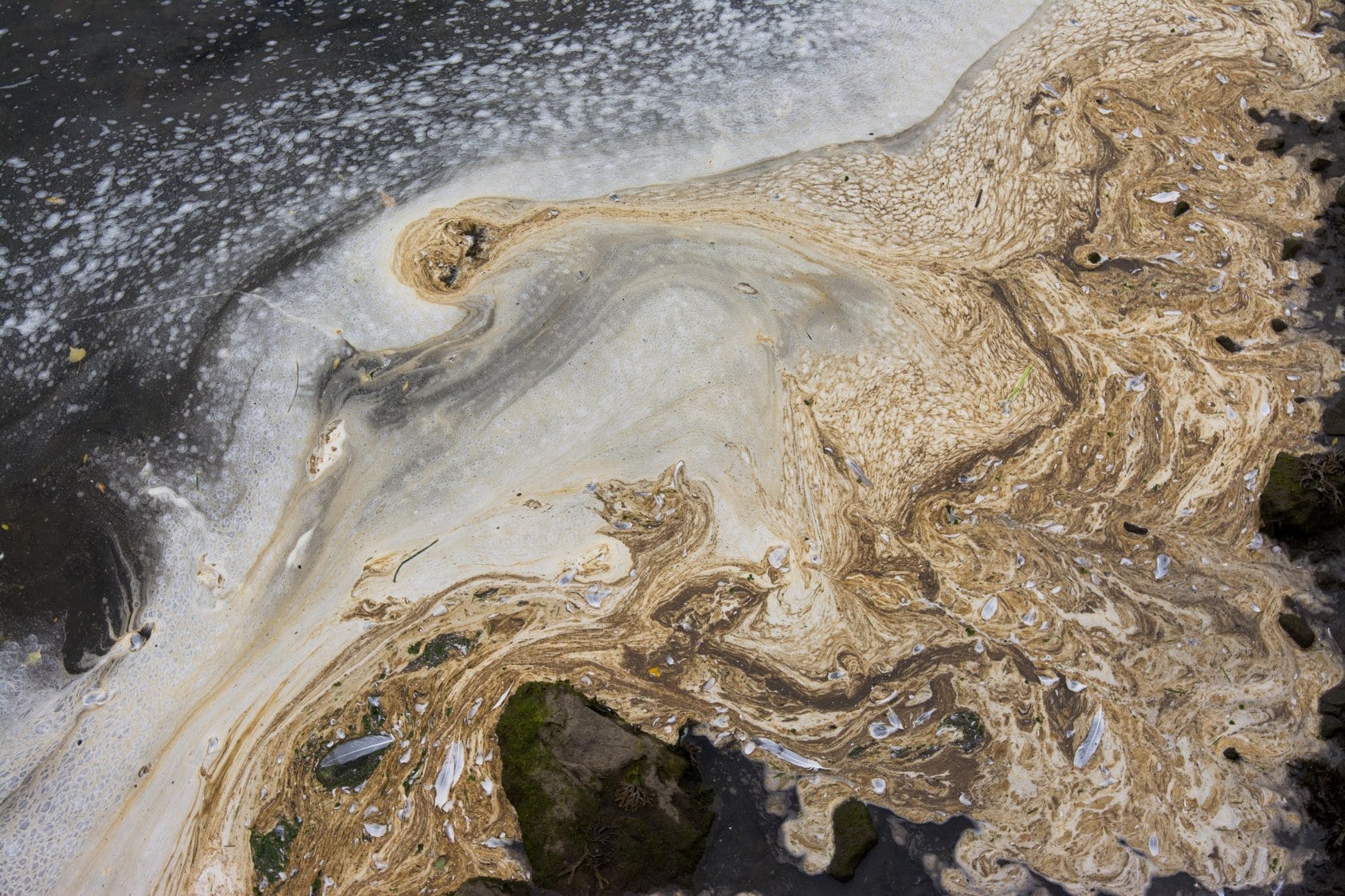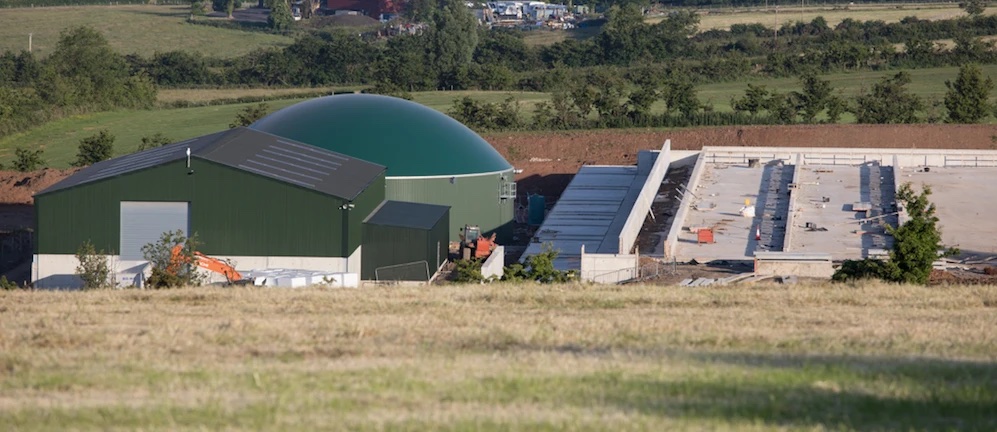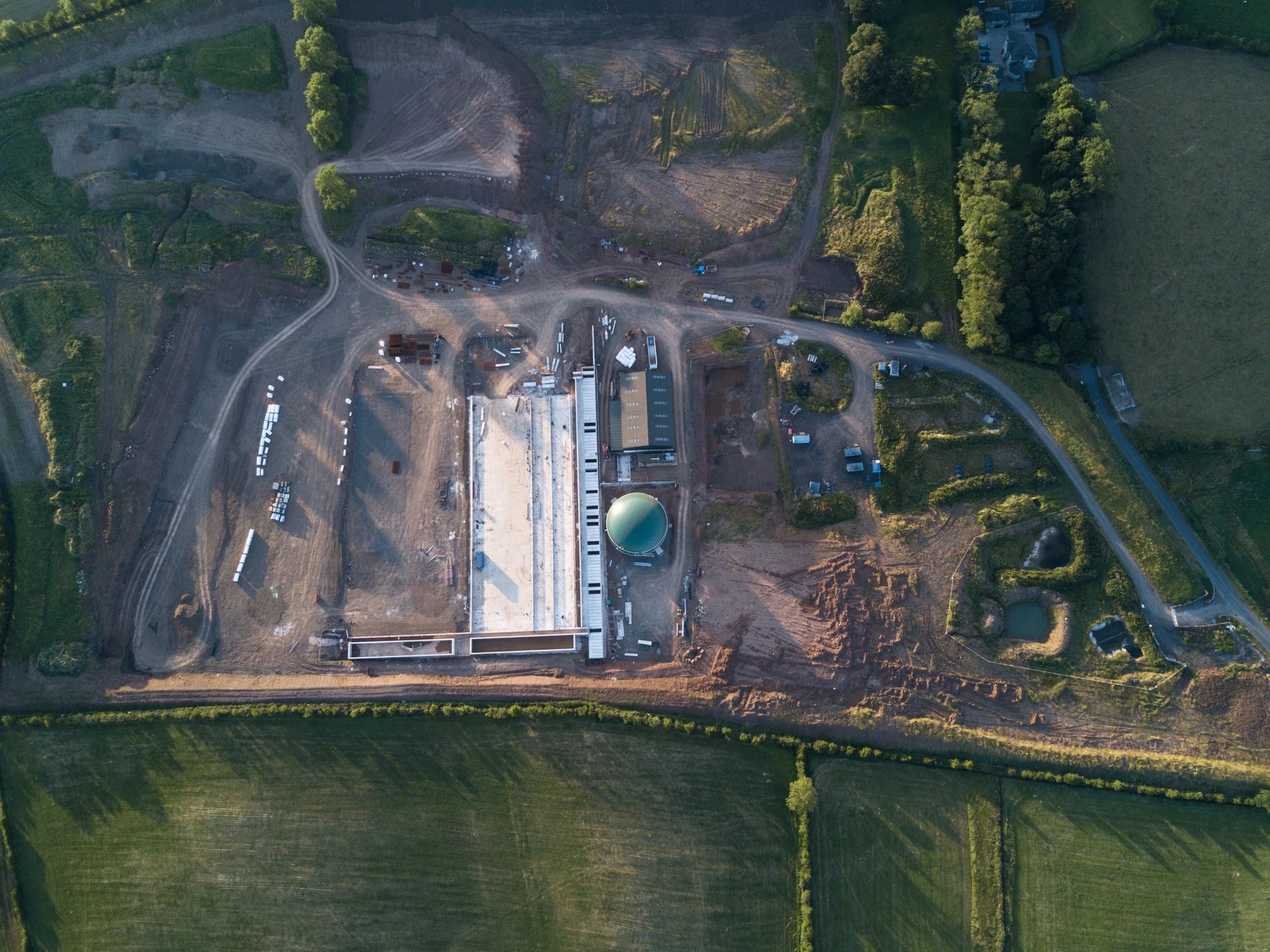Unmonitored ‘emergency overflows’ in conservation areas are discharging waste routinely, data reveals
Fisherman Nigel Geary was counting redds, nests where salmon lay their eggs, on the River Ribble in Lancashire in November 2021 when a raft of excrement floated past.
“Grey, horrible, slimy,” he said. “That’s the only way I can describe it.”
A nearby overflow pipe had spilled sewage into the Ribble, poisoning the water. That day, at what he describes as an important breeding ground, Geary spotted no redds at all.
England has more than 14,000 storm overflows, which release excess water after heavy rainfall. Following the introduction of new regulations in 2010, they are all now closely monitored. There are also, however, another 7,000 emergency overflow pipes. These are barely monitored.
Emergency overflows are designed to operate only in exceptional circumstances like mechanical failure. An investigation by SourceMaterial and the i newspaper found that many appear to be routinely spewing sewage into sensitive habitats.
Analysis of data obtained from the Environment Agency under freedom of information laws shows that nearly 900 of England’s emergency overflows are in conservation areas. One at Dean Brook, a tributary of the Ribble in the protected Forest of Bowland, pumped waste water 83 times in 2022 for a total of 1,341 hours, the data shows.
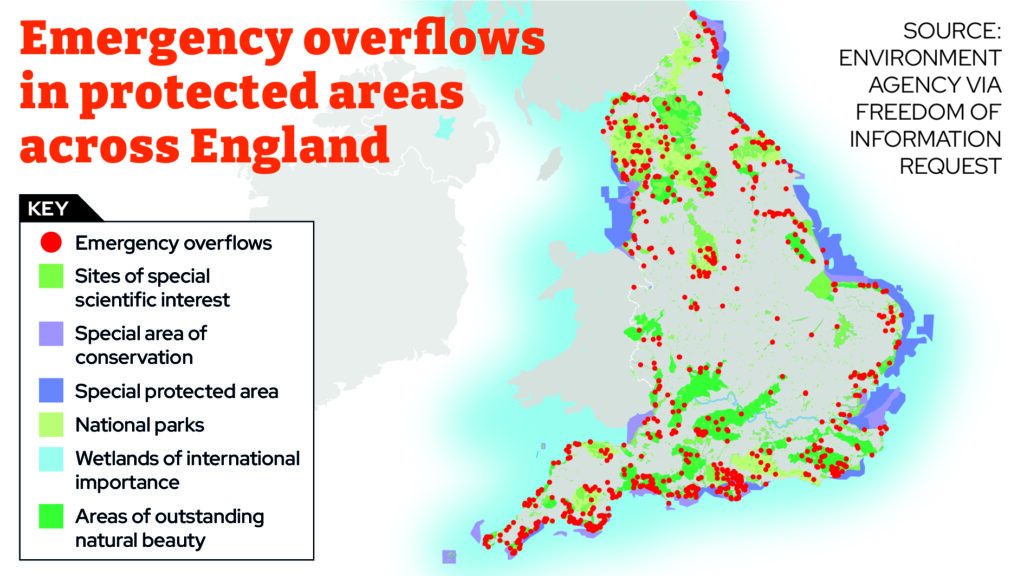
“When will the government enforce their legal responsibility?” said James Wallace, chief executive of River Action UK, a campaign group. “We desperately need the sewage scandal to be treated like an emergency.”
Faecal bacteria
The Dean Brook pipe is under a bridge close to the start of a J.R.R. Tolkien hiking trail, a “richly beautiful” route through an area where the author regularly walked while writing The Lord of the Rings. The surrounding Forest of Bowland is designated an area of outstanding natural beauty and a nearby section of the River Hodder is classified as a site of special scientific interest.
Despite these legal protections, raw sewage regularly poses a serious risk to wildlife, according to Surridge. The pollution causes algal blooms which block out sunlight and eventually deplete the water’s oxygen, killing fish and other animals.
Under Pooley Bridge on the River Eamont in the Lake District, another emergency overflow pipe has frequently released sewage into one of England’s best-loved national parks—34 times in 2022, for a total of 661 hours.
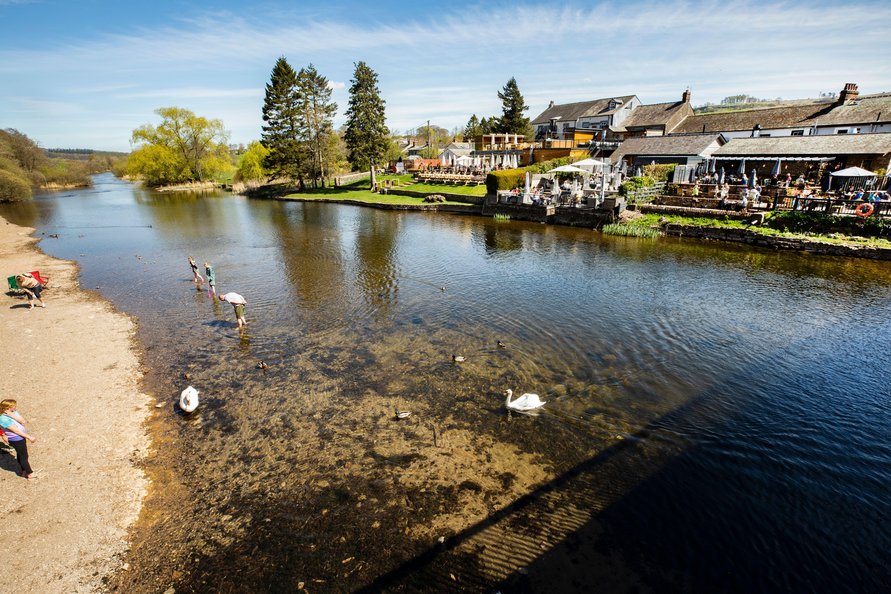
In an area described by the local council as “outstandingly floristically rich”, the pipe is less than 300 metres upstream from Ullswater, a glacial lake popular with swimmers, and less than 600 metres from a watersports centre offering paddle boarding, kayaking and canoeing.
There is a risk to human health, with swimmers risking exposure to “faecal bacteria”, Surridge said.
Vibrant life
Because just 10 per cent of emergency overflows are monitored, data on them is scarce.
“The government likes to claim that most or all sewage overflows are monitored,” said Wallace of River Action. “As with many statements from our failing and under-resourced environmental regulators, this is a long way from the truth.”
Current laws require water companies to monitor emergency overflows only if they discharge into shellfish habitats, and data exists for just 686 of the 6,932 emergency overflows in England, around 10 per cent.
“The shocking absence of monitoring reflects the government’s lackadaisical approach to regulation”
Monitoring is required because of the risk contaminated shellfish could carry E coli bacteria that cause food poisoning. At least a third of the monitored pipes operated at some point during 2022, the most recent year for which data is available, according to the Marine Conservation Society, a charity.
Last year, 11 shellfish production zones in Cornwall were closed because of “very high” levels of E coli, with the shellfish industry blaming sewage.
While SourceMaterial found 890 emergency overflows in protected areas, data is available for just 161 of them. More than a third of these spilled sewage in 2022, a total of 265 spills.
“The shocking absence of complete overflow monitoring reflects the government’s lackadaisical approach to regulating the private, profit-focused water industry, despite its history of illegal spilling,” said Matt Staniek, founder of Save Windermere, a campaign to protect England’s largest lake.
‘Failing to deliver’
Responding to a freedom of information request, South West Water, which operates 221 emergency overflows in conservation areas, said that while “in many cases” they were used in an emergency, “this is not always the case”.
The company had, for example, identified “properties where the roofs of buildings connect to the sewer, creating high flows at downstream pumping stations”, meaning that storms could cause spills at certain emergency overflows. South West Water plans to re-engineer the sewers at these locations or obtain the appropriate permits from the Environment Agency, it said.
United Utilities, which operates the Dean Brook and Pooley Bridge overflows, did not respond to a request for comment.
“Water companies are failing to deliver for our environment”
“We urgently need better data and understanding of the actual impact of these emergency overflows on freshwaters,” said Surridge.
An Environment Agency spokeswoman said that the government is “taking action to introduce monitoring on all emergency overflows” beginning next year.
Any water companies using emergency overflows routinely, in breach of their operating licences, should be held accountable for any pollution they cause, said Laura Foster, head of clean seas at the Marine Conservation Society.
“Water companies are failing to deliver for our environment, with raw sewage polluting some of our most valued natural spaces,” she said. “We need to see water companies comply with their permits.”
Headline picture: Maurizio Distefano, Alamy
